Depending on the "trusting relationship" between the cat and its owner, and taking into account its temperament, you can give injections by yourself, placing the cat on your lap or on the table, without additional fixation, or with an assistant.
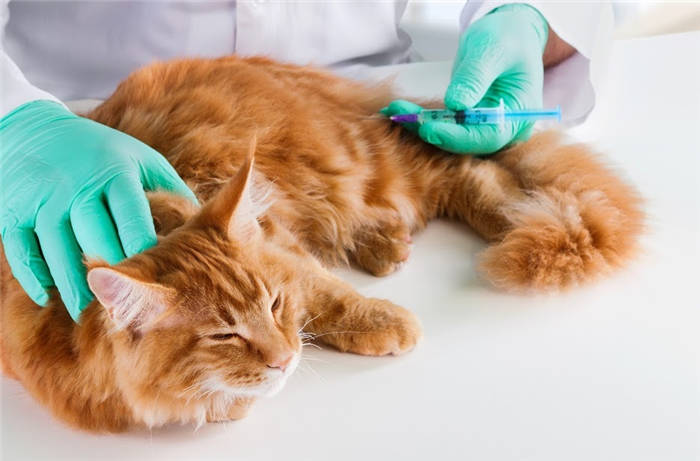
- How do I inject a cat myself?
- You have decided that you can do it yourself. Where do you start?
- Why an owner should know how to inject a cat subcutaneously
- Subcutaneous injection technique for cats
- Preparation for the procedure
- Choose a place
- Preparing medication
- Step-by-step instructions.
- Subcutaneous injection
- Intramuscular injection
- What kind of syringe is appropriate
- How to inject the cat intramuscularly – detailed instructions
- Preparing
- 😾How to inject a cat intramuscularly
- How to give an intramuscular injection to a cat. Rules
- How to give an intramuscular injection to a cat
- Possible complications
- Anatomical features of cats
- Where exactly is the withers
- Why the withers are ideal for subcutaneous injections
- Where else are hypodermic shots administered
- Preparation for the procedure
- Choice of syringe
- Needle Selection
- Preparation for the procedure
- Choosing a syringe for injection
- Syringe volume
- Needle diameter
- The division value
- Injection technique
- Intramuscular injection
- Possible Consequences
How do I inject a cat myself?
Hi all! I, as many of my subscribers know, am a cat lover in a generation, and with a decent amount of experience. And today I want to tell you how to give a shot to the cat. At home. On your own.
This is NOT a call to give shots yourself, this is a guide for those who HAVE decided to give their cat shots at home VETERICALLY prescribed.
To avoid biting, you can buy these devices – a cat muzzle and bag-lock. But these things are disposable, otherwise why would I take pictures of the muzzle on Biscuit, and not on the cats, who scattered to different, hard-to-reach parts of the apartment, just at the sound of getting these things?
Therefore, it is best to involve other family members, because a well-fixed cat is a guarantee of your health.
You have decided that you can do it yourself. Where do you start?
First you need to prepare the "shot". Wash your hands with soap and water. As I've been told. you have to make sure you're holding the right drug. Well, anything can happen, and from the excitement you can really grab something wrong. If you keep it in the refrigerator, make sure you warm it up. (this applies to vaccinations and many antibiotics). Cold injection increases your chances of getting bitten fingers and scratched hands and face. Well and it can cause, in addition to pain for you and the cat, inflammation at the injection site and the bite.
Then get rid of the air bubbles in the syringe by tapping on it with trembling fingers. The plunger should be squeezed so that the medicine comes right up to the needle and there are no bubbles inside. The needle must be tightly attached to the syringe, otherwise it can come off at the most inopportune moment. Believe me, you don't want "rabies" or very tasty, sometimes flavorful, antibiotics on you.
When the syringe is ready, throw away the ampoules, wash your hands. Prepare the place where the patient will be admitted. Catch the cat. It is better to involve other family members. Secure the patient. Remember, cats are very strong animals! Despite their small size, they are capable of sweeping three grown men around the room, and with the right persistence, can keep half the village in fear.
Why an owner should know how to inject a cat subcutaneously
Knowing how to properly give a cat a hypodermic injection can sometimes save a cat's life when immediate action is needed.
In addition, the owner should know how to properly perform the procedure in order to:
- Save on visits to the veterinary clinic;
- Prevent high stress on the animal during transport and visits to the hospital;
- save time;
- be able to help other pet owners in emergency situations.
Administering a hypodermic injection to a pet is not as difficult a task as it may seem at first glance. The key is not experience, but proper preparation and technique to perform the procedure.
While intramuscular injections are quite painful for the animal, even if carried out by a specialist, injections into the withers do not cause much discomfort to the animal.
The withers are the ideal place for subcutaneous injections for the following reasons:
- Reduced sensitivity . With proper preparation and insertion of the needle under the skin, the animal may not even feel the manipulation.
- The loose structure of the lower skin layer, the hypodermis . Specialists prefer to perform subcutaneous injections in the withers area, because the loose hypodermis is good at absorbing large volumes of fluid. Active blood supply accelerates the process of absorption of the injected drug into the systemic bloodstream and the drug starts working after 20-30 minutes. Of course, subcutaneous injection is inferior to intramuscular injections in terms of speed of action, but it is ahead of oral drug administration.
- Reduced nerve endings . The animal hardly feels the manipulation.
Subcutaneous injections can be performed not only at the withers. The area of the thigh crease and the front part of the thigh are suitable for the procedure. In this place, the lower layer of skin is also well developed and has a loose structure, and the skin is pulled back sufficiently.
Subcutaneous injection technique for cats
Proper preparation for the upcoming hypodermic injection is extremely important.It includes the preparation of medications and necessary instruments.
If the animal is aggressive in its normal state, experiencing intense fear, it may become inadequate. The help of an assistant will be needed or a special bag-fixer may be taken.
It is necessary to choose the right syringes and needles, as well as remember about the peculiarities of some drugs.
For example, if it is necessary to give a hypodermic injection to a small kitten, it is advisable to choose an insulin syringe with a thin needle. Thick-skinned adult cats, such a needle will not work, as it is not able to penetrate to the right place.
As a rule, veterinarians prescribe a treatment plan and advise the owner on the specifics of therapy.For example, oil-based injection solutions quickly clog the hole of the needle, so the insulin syringe will not do the job.
The animal's jitteriness should also be considered. If the cat is active and quite aggressive, in the process of resistance the pet may simply break the needle of the insulin syringe.
It is important to remember one more nuance – drugs intended for intravenous injections should not be injected subcutaneously.
Otherwise, there is a high risk of developing burns of the inner layers of the skin, up to and including necrosis. For large doses of medication, the drug can be injected in several stages, selecting several points on the withers, which will avoid irritation and bruising.
The technique of giving a hypodermic injection to a cat is as follows:
- Preparing the syringe and ampoule with the drug solution. The solution can be extracted in the usual way by breaking off the tip of the ampoule or rubbing it with a blade. The protective cap is removed from the needle and the necessary amount of the drug is filled into the syringe. For convenience, the ampoule can be slightly tilted, focusing on the scale of the syringe.
- Next, you should lift the syringe with the needle vertically and slowly release excess air by gently pressing on the piston.
- The cat should be secured and try to calm it down. Scolding or yelling at a bound or restrained animal is not allowed, it will lead to negative consequences. Gentle but persistent action will avoid problems with injections into the withers in the future.
- Grasping the skin fold at the withers with three fingers, it is necessary to make a "pocket" and insert a needle at the base of the fold at an angle of 45 degrees. Initially, the needle will encounter resistance, and as soon as the resistance disappears, you can start injecting the drug.
Preparation for the procedure
I recommend starting any stressful interventions with careful attention to the animal. More often than not, cats are afraid of injections and may behave aggressively, which means you must take care of your pet's comfort. Some animals will hide when they see an owner with a syringe. How to catch a cat, I describe in another article.
Choose a place
Choose a flat and non-slippery surface for the manipulation. Cats are different: some are brave and not afraid of treatment, and some lose their courage. Therefore, take care in advance to have a thick towel handy (in case the pet is aggressive) and a disposable diaper in case the cat can't hold back the urge to pee out of fear.
Preparing medication
Do not prescribe medication yourself, administer it only as prescribed by your doctor. Before the procedure, double-check the dosage and the order in which the medication is administered (if there are several), because the cat's resistance can cause confusion and confusion.
It is important to check with the doctor about the speed at which the medication should be administered. This is very important because it avoids shock and rapid intoxication.
Some medications must be kept in the refrigerator. Before the procedure you should take them out and leave them to warm up to the cat's body temperature (37-38 degrees) or to room temperature for an hour and a half or two hours.
Prepare extra absorbent cotton and hydrogen peroxide to stop bleeding if something goes wrong. Make sure you have easy and quick access to them.
Step-by-step instructions.
There are three types of injections: subcutaneous, intramuscular, and intravenous. It is difficult to inject medication into a vein, this is handled by specialists, so we will consider only the first two types.
Subcutaneous injection
Subcutaneous injections are given in the withers (between the shoulder blades) or in the knee fold. The withers injection is most often administered because it is less painful and there is less risk of hitting nerves and blood vessels.
- Place the pet on a flat surface. Allow time to calm down.
- Grab the cat by the fur, fixing the animal in place beforehand, and pull back a portion of the skin slightly. A fold should form.
- While the other person holds the pet's body firmly, insert the needle into the resulting fold. The angle of insertion is 45 degrees. Immerse the needle 1-1.5 cm deep.
- At first you will feel resistance, the needle will enter tightly. As soon as you feel that there is no resistance, it means that you have got under the skin.
- Give the medicine as instructed. Remove the syringe and release the skin.
- Massage the injection site with your thumb and give your pet a treat.
Intramuscular injection
When giving an intramuscular injection, the most important thing is to choose the right puncture site. It is usually injected in the hind paw, in the middle third of the thigh along its posterior-external surface. The depth of the needle is 1-1.5 cm.
Feel the place above the cat's knee (middle third of the thigh). There you will find a fossa, in which it is best to inject.
- Fix the cat on a flat surface and massage the injection site. To do this, bend the cat's paw and achieve its relaxation with the help of massage.
- Feel the bone and step back from it one and a half to two fingers so that the insertion is on the posterior-surface of the thigh. This will mark the approximate injection site.
- Insert the needle at a 45-degree angle.
- Slightly pull back the plunger. If there is blood, you have hit a blood vessel. There is nothing wrong, take out the syringe and put the needle in another place.
- If there is no blood, inject the drug. On average, the drug should be injected in 2-3 seconds.
- Pull out the needle and massage the injection site. Give the pet a treat.
What kind of syringe is appropriate
Sometimes veterinarians give the medicine already filled in the syringe, and then the owners of the animals have one less problem. But often you have to buy the tools yourself, and then you need to be careful about the choice.
Often cat owners choose insulin syringe – its needle is very thin and short, which makes the procedure for the cat almost invisible. Another advantage is that adult cats can insert the needle all the way in without fear that it will go too deep.
Also the insulin syringe allows to determine the dose of the medicine more accurately – it is possible due to the abundance of divisions.
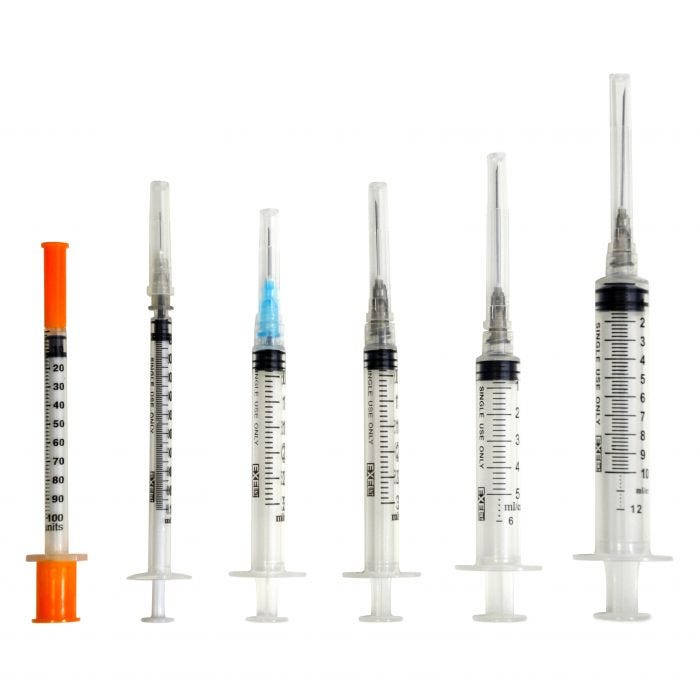
But there are cases where an insulin syringe is better not to use:
- The medicine is too thick, and it will not pass through the thin needle;
- The insulin syringe is designed for a volume of up to 1 ml, and if you want to administer a larger dose, it is not suitable;
- A cat that is too active may bend or even break the thin needle, and this is dangerous.
It is better to choose a regular syringe with the thinnest needles, so as to traumatize the muscle tissue less. A long needle implies that the person himself controls the depth of its insertion, and this is not so easy for beginners.
How to inject the cat intramuscularly – detailed instructions
For everything to go successfully and without unnecessary stress, it is necessary to take the time to prepare, as well as to double-check your skills. This will reassure both the owner and the pet.
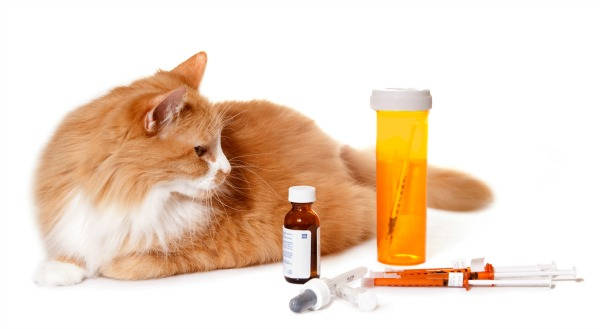
The first experience can be hard, but it will get easier and easier each time. With experienced owners and veterinarians, cats often don't even feel that they have been injected.
Preparing
After calming and preparing the animal, determine the location for the puncture. The area to be injected should be free of trauma and inflammation. The long hair should be trimmed in the area where the medicine will be injected. The protective cap is removed just before the injection and in no case before.
- The process is fast if the competent preparation is carried out. In advance, lay out on a clean surface a absorbent cotton, syringe, ampoule, a special file and alcohol.
- Before using, you need to read (or reread) the instructions for the drug. If you have any questions, you should call and consult a veterinarian.
- Wash hands with soap and water and rub them with alcohol. Check that the liquid is at the bottom of the ampoule before undercutting the container. If the solution got into the neck of the bottle, you need to tap on its walls. Then you need to insert the needle into the sawed off neck and turn the container upside down – this way it will be much more convenient to draw the liquid.
- When the solution moves into the body, the syringe is turned over with the needle upwards so that the air bubbles rise. Then move the plunger until the needle fills with liquid. The air should be completely drained by the time you use it.
- There is no need to worry, because the animal will realize this and start to worry too. It is advisable to pet the cat so that it is in a normal mood.
- There is no need to wipe the injection site with anything – it will only damage the antibacterial layer on the surface of the skin.
😾How to inject a cat intramuscularly
As sad as it is, a beloved pet can get sick. Even if all the basic procedures will be done every day during the regular appointment by the attending veterinarian, injections may also be scheduled for the evening.
And these are the things that the owner of the animal has to do directly. We must put aside such arguments not to inject the cat as "I'm sorry" and "I don't want to hurt".
A properly given intramuscular injection hurts the cat many times less than the animal can get from playful bites with other cats.
And if you really feel sorry for your pet, you need to follow all the doctor's orders to save your beloved cat. Therefore, learning how to give intramuscular injections to a cat is a must for almost every owner.
How to give an intramuscular injection to a cat. Rules
Before proceeding directly to the procedure, it is important to remember some basic rules.
The injection is performed only with a sterile syringe . It is very important to choose its size correctly. It is most practical to inject cats with an insulin syringe.
The needle of such a syringe has the best diameter for cats. It can be safely inserted almost to the full length into the muscle tissues.
For adult cats it is enough to insert the needle to a depth of 1 cm. and for kittens 0.5 cm. But insulin syringes only reach a volume of 1 ml. Therefore, for the introduction of large amounts of drugs it is necessary to select a syringe of larger volume.
You can find a way out by buying special thin and short disposable syringe needles at the veterinary hospital.
Of course, you can inject with a "native" needle from a 5 ml syringe. Then you will have to fix the cat better, because it will really hurt. And be careful how deep you insert the needle into the muscle so as not to pierce it through.
The prescribed dosage of the medication must be followed exactly. . To do this you will need to look at the scale of the syringe.
The longer "dashes" with numbers opposite are milliliters. Correspondingly, the divisions with a slightly smaller dash, but larger than the smallest ones, are half a milliliter. The smallest divisions have the value of 0, 1 ml.
It is not difficult to understand that if a shot of 1.5 ml is prescribed, then the syringe should be filled above the first marking with "1" and the middle marking between "1" and "2".
And if you need to inject 0, 8 ml of medicine, then dial to the middle line of the first milliliter (this will be 0, 5) and count three more smallest divisions, stopping the syringe piston above the top.
It is important to realize that administering an insufficient amount of medication from the dose prescribed by the doctor may not bring the desired effect, and overdose can sometimes be more dangerous than the disease being treated for.
How to give an intramuscular injection to a cat
To give an intramuscular injection, choose the back of the thigh. The area between the knee and the hip joint is riddled with blood vessels, and the medicine will get into the bloodstream faster.
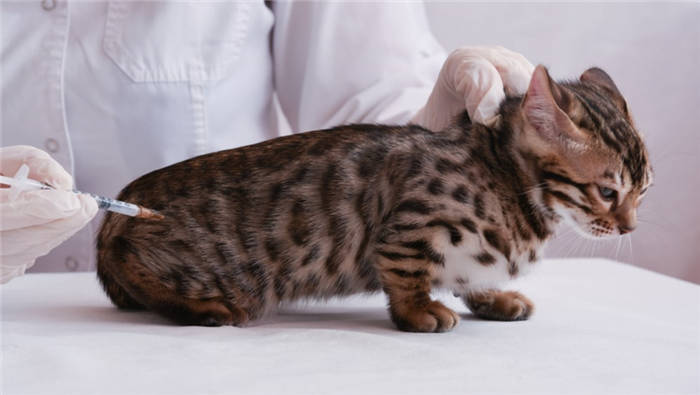
If you are giving intramuscular injections as a series, take turns injecting in one leg and the other. Intramuscular injections cause the muscle tissue to separate and the body needs time to recover.
– Fix the cat in the correct position. Lay the cat on its side, holding it by the withers and both pairs of limbs with the help of one or two assistants.
If assistants are not available, swaddle the animal in a blanket or use a special fixation bag from a pet store.
– Insert the needle. Feel for the femur bone, move a thumb's width away from it and insert the needle at right angles, holding the syringe slightly to the side of the torso. This position will keep the sciatic nerve safe and allow the needle to pass deep into the muscle without affecting the bone or joint.
The needle should be inserted with a sharp movement to a depth of 1-1.5 cm (usually half or third of the total length). The cat may jerk at this point. But the needle will stay in the muscle, and you will be able to continue the procedure as soon as it calms down. The main thing is not to twist the syringe around its axis and not to swing the needle from side to side.
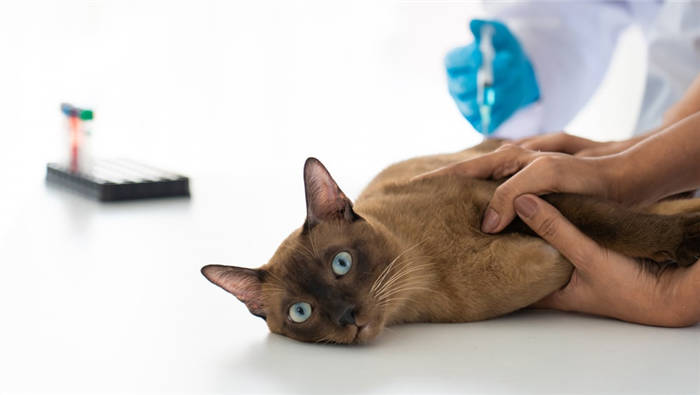
Muscle tissue at the moment of injection should be relaxed. Therefore, the hind limb should be massaged beforehand.
– Check whether the capillaries are intact. Pull the plunger toward you. If the syringe fills with blood, remove the needle and inject again.
Possible complications
If you inject your cat incorrectly – such as injecting the drug in the wrong place, damaging a vessel, or hitting a nerve – problems may include the following.
If the needle bleeds and the surrounding tissue turns purple then the needle has hit the wall of a vessel and bleeding has occurred.
What to do. To stop the blood and reduce pain, place an ice pack or wet towel over the injection site. Usually the negative effects of a vascular injury go away on their own and do not require additional treatment. But if the injury is extensive and the bleeding does not stop, you should contact your veterinarian.
If there is a lump at the injection site, it means that the drug is not resorbed or the wound has begun to inflame.
Usually swellings and bumps appear due to large-volume injections, preparations from the refrigerator or sudden injection of liquid. Especially if the medication was oil-based and injected subcutaneously.
What to do. Observe the lump for 1-2 days. If the lump does not resolve, see your veterinarian.
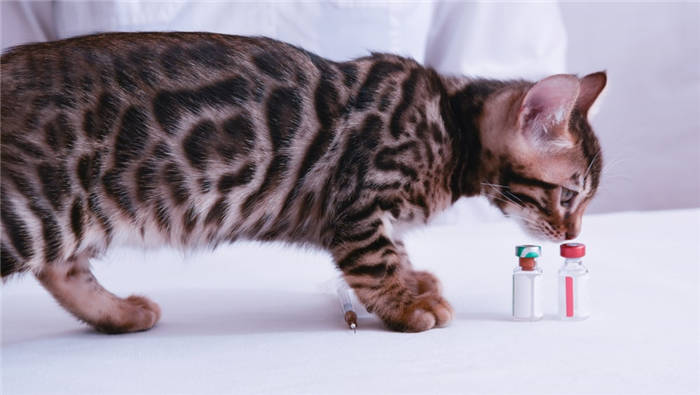
If pus has formed in the tissue cavity, the animal looks lethargic and refuses to eat, and the body temperature is elevated, the wound is infected and requires immediate therapeutic or even surgical intervention.
What to do. Make an appointment with a veterinary surgeon. The abscess will have to be surgically removed or anti-inflammatory medication will have to be used.
If the cat has become limp on one paw, the needle has hit the sciatic nerve. This condition usually goes away within the first hour after the injection. But if nothing changes within two days, then the damage is serious. In this case, you need to see a veterinarian or call him at home.
Anatomical features of cats
With a lack of experience, owners worry that they will not be able to prick their pet painlessly. The groundlessness of these judgments can be confirmed after getting acquainted with the anatomical features of the whisker.
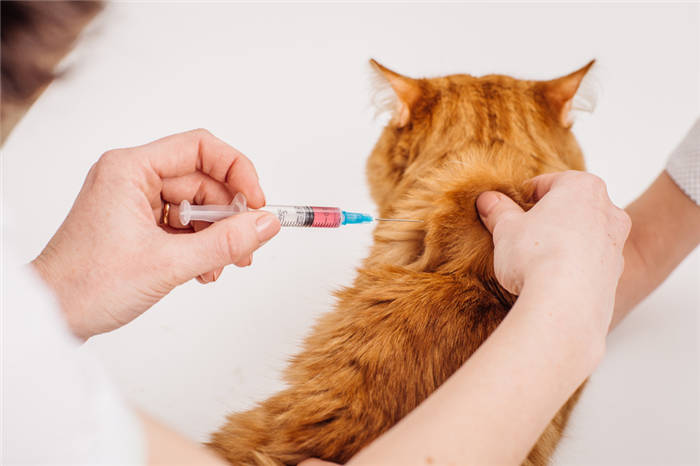
Where exactly is the withers
The trunk is the part of the body that connects the back and neck. Alternate name is pucker. Mama cats grab their kittens by this area to move them to another place or to restrain them during too active games. Temporary paralysis of the baby is associated with the pinching of nerve endings. It is completely painless up to a certain age.
It is not safe to punish adult animals by dragging them by the scruff of the neck. Because of the weight gained, the tension created will squeeze the muscles of the neck. With a sharp grip, a careless owner can injure their pet's spine. With age, the skin becomes coarse and loses elasticity. When pulled, it can tear or crush the throat, cutting off oxygen.
Why the withers are ideal for subcutaneous injections
The first reason is low sensitivity. If you figure out how to properly inject a cat's withers, a subcutaneous injection won't even be felt.
Another reason is the loose structure of the hypodermis, i.e. the lower skin layer. It is good at absorbing large amounts of liquid, so it is better to inject in this place. Due to the active blood supply, the injected drugs are quickly absorbed and take effect within half an hour. This speed is inferior to intramuscular injection, but wins over oral administration.
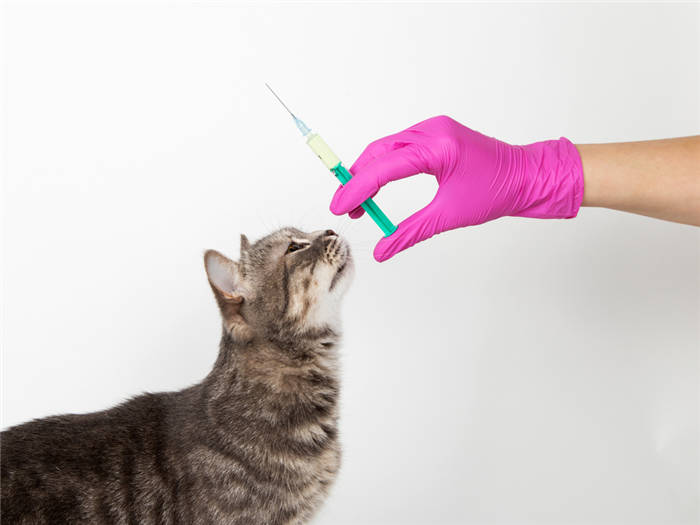
Where else are hypodermic shots administered
When prescribed by the veterinarian, injectable solutions may be injected under the skin of the front of the thigh and the thigh crease, which is located at the border between the groin area and the thigh. The hypodermis in these areas is just as loose and developed, and the skin pulls away quite well.
Preparation for the procedure
Before injecting a cat in the withers, you will need to prepare tools and medications. For cowardly and aggressive animals, you need to buy or rent a special retainer from acquaintances. You can use a brave partner instead, ready for combat wounds from your pet.
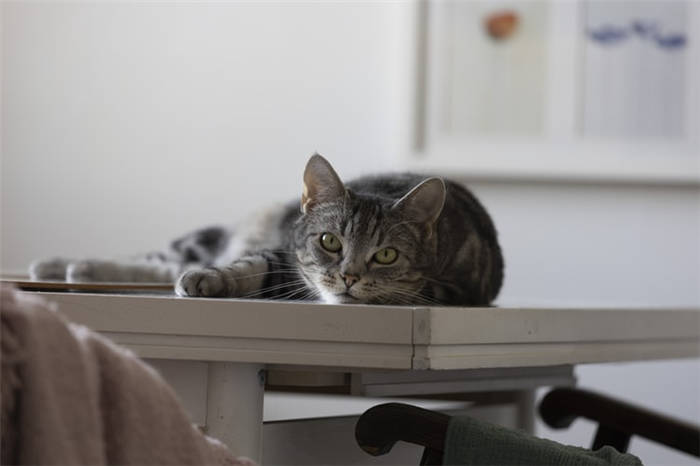
Choice of syringe
When selecting therapy, the veterinarian will go over the specifics of the injection and choice of instruments beforehand. If something has slipped his mind, it's the following criteria should be considered:
- Age . It is better to inject a kitten in the withers with an insulin syringe. If the cat is too fat, it will not work, as the needle will not reach the right place. For babies, the standard needle is injected partially, and for adult animals – all the way to the end.
- Type of drug. Oily solutions quickly clog thin holes, so it is better to abandon the insulin syringe in favor of a larger one (at least 3 ml).
- Pet's jitteriness .. If a thin needle is used during active resistance, there is a high likelihood of it kinking or breaking off.
For smooth and painless administration of the drug, choose instruments with rubber bands on the pistons. Consider not only volume, but also needle size.
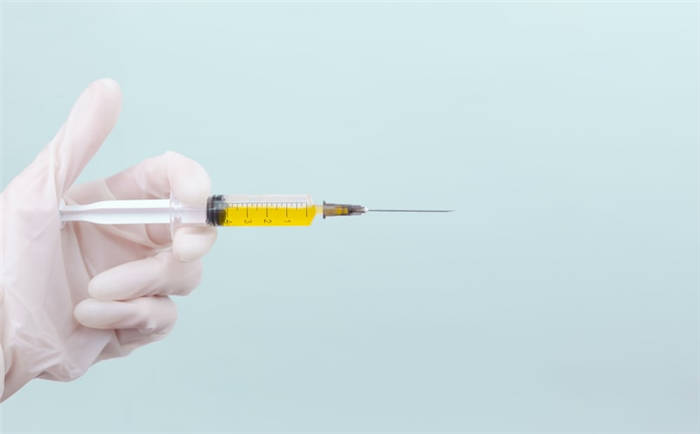
Needle Selection
Thick and oily drugs are best injected through a needle from large syringes with a well beveled end. Such thick needles have a number from 18 to 20 and are marked in pink, cream, or yellow.
Normal liquid preparations can be injected through needles #21-24, the tip is also better to choose beveled. They can be distinguished by their green, blue, black or purple color.
Preparation for the procedure
Before proceeding, it is necessary to carefully prepare the place, tools and the pet itself.
It is best to give the shot in a quiet place where the pet will not be distracted by other animals or loud noises. Place the table in a well-lit room and remove unnecessary items from the table. Lay a towel or diaper: the cat should not slip on the surface during the procedure, especially if it is in a standing or sitting position during the injection.
Read the manufacturer's recommendations carefully and check the prescription from the clinic. The instructions indicate how the drug should be given: intramuscularly, subcutaneously, or intravenously. The drug should be administered only in accordance with the instructions to avoid complications.
Also note that storage conditions for different drugs may differ in temperature and light access. If the drug has been stored incorrectly, you should not use it: it may not only not have the desired effect, but also harm the health of the pet. The same rules apply to the expiration date. It is forbidden to use the product with an expired shelf life.
- If the drug has been stored in the refrigerator, warm it up to room temperature: to do this, hold the syringe with the remedy in the palms of your hands. Injection of a cold substance will make the pet uncomfortable and may cause inflammation;
- The preparation in glass ampoules must be sawed in advance and gently opened along the file line just before taking the liquid. A file is usually included in the kit;
- Preparation with a rubber cap does not require opening: a needle is inserted in the center of the cap, which is replaced by a new one before the drug is injected;
- The drug in powder form must be diluted with the saline solution or other liquid included in the kit. The proportions and method of dilution can be found in the instructions for use;
- If one ampoule of the drug is designed for several procedures, it is necessary to distribute the drug into syringes and store according to the manufacturer's recommendations.
Choosing a syringe for injection
The choice of syringe depends on the amount and density of the drug to be injected and the size of the animal. The volume of the syringe, length and diameter of the needle should be such that the procedure goes as quickly as possible and the pet is not very stressed.
Syringe volume
For most injections, syringes with a volume of 2-3 ml are suitable. 1 ml insulin syringes can also be used, but with special caution: their needles are very thin and short, so the drug may not reach its destination and cause inflammation of tissues. Also the needle of an insulin syringe may break if the pet starts to vomit.
If the medication volume exceeds 2-3 ml, use 5, 10, or 20 ml syringes, depending on the amount of substance being administered.
Needle diameter
The diameter of the needle depends on the "viscosity" of the drug. If the drug is dense or thick, the diameter should be at least 0.7 mm to allow the drug to pass through the needle more quickly. Note that the thinner the needle, the more effort will have to be put into the drug, which will significantly reduce the speed of the procedure. Therefore, for dense and viscous medicines it is better to use needles from syringes of 5-10 ml, for injections for kittens – from syringes of 2-3 ml.
For water-based preparations, a needle with a diameter of up to 0.6 mm and a length of up to 30 mm is suitable. If you need to inject a kitten, use a needle from an insulin syringe. A needle from 2-3 ml syringe will do for adult pets.
The division value
It is also necessary to understand what volume of liquid corresponds to the division on the syringe.
It is necessary to calculate the exact graduation value in order not to make mistakes in dosing. If in doubt about the dosage, consult your veterinarian.
Injection technique
The speed of administration of the medication plays a role in an intramuscular injection. The larger the medication, the slower it should be injected. For example, the volume of 1 ml should be stretched for 2-3 seconds, and 0.5 ml should be injected in one second.
Injections loosen the muscles and thereby cause micro-trauma to the body. Therefore, a certain calculation for injecting the right amount of medicine for cats of different weights is applied. For an average cat weighing 4 kg you should get 1 ml of the drug in one place. If a larger amount needs to be injected, it should be injected in several places.
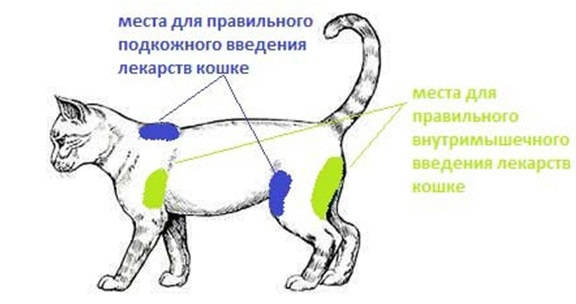
When injecting subcutaneously, the speed of drug administration is not essential. The amount of liquid per 1 kg is limited to 70 ml.
Intramuscular injection
In order for the medicine to work quickly, an intramuscular injection is mainly given. The best place to inject is the middle of the thigh.
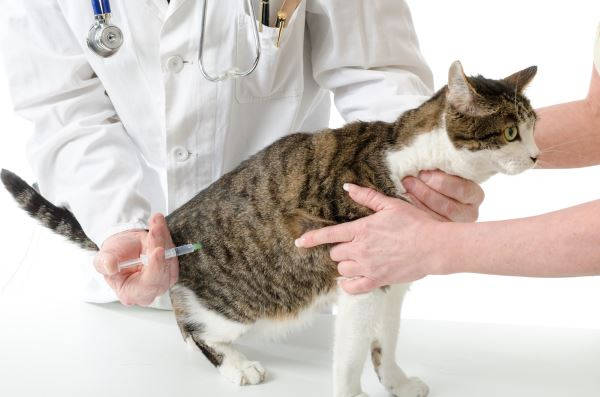
- The procedure will go quickly and successfully if preparations are made. In advance, we lay out on the table a absorbent cotton, a syringe, medicine, a saw, alcohol.
- Read the instructions carefully. Suppose you notice a discrepancy with the veterinarian's prescription. Call the doctor and find out before you proceed with the injection.
- Wash your hands with soap and water and rub with alcohol.
- Make sure the medicine is at the bottom of the ampoule before you prime it. If the medicine gets into the narrow part of the vial, tap the walls with your finger and distribute it correctly.
- Point the needle into the cut neck and turn the vial upside down. This way, it will be more convenient to draw the liquid.
- Once the solution has been drawn into the syringe, turn the syringe upside down with the needle so that the air droplets rise upward. Press the plunger until the needle is full of medicine and the air is expelled.
- Don't get anxious before the procedure or the cat will feel it and become agitated and tense. You need to soothe the cat with caressing motions to relax the muscles.
- There is no need to lubricate the injection site with anything, as this can only damage the antibacterial layer of the skin.
Possible Consequences
Sometimes the procedure does not go without consequences. Therefore, it is necessary to be prepared for them in order to alleviate the cat's plight. Let's consider the most common ones.
Sometimes you notice a drop of blood after the injection. A blood vessel may have been damaged. If there is not much blood, you need to take ice, wrap it in a towel and put it on the wound. After 10 to 20 minutes, it will go away. If the wound bleeds after the cold is applied, see your veterinarian immediately.
Post-injection abscesses are the result of a bad injection. A bacterial infection enters the wound. The second cause is that the pet is hypothermic in the injection area. The consequences: fever, fever, restlessness. The cat develops painful, purulent capsules, which are removed by surgery.
Usually, however, swellings and bumps after injections have no effect on the health of the cat. Over time, they will dissolve on their own without the veterinarian's involvement.
The occurrence of hind limb lameness often appears after shots. According to veterinarians, there is no need to worry about this. The limp will go away in a few days.
But if a cat has been dragging its leg for several weeks, you should see a professional veterinarian to prevent the disease at an early stage. Doctors will administer a series of novocaine blocks.
The pet changes a lot after the injections: nervous, does not let himself be stroked. Specialists explain it as a psychological attack. Cats are afraid of people in white coats, injections. To bring it back to its original state, you need to give the pet time. Over time, he will forget everything and will be active, affectionate still. You can speed up the process with your favorite food, pamper the cat with tasty treats, and it will respond to care immediately.
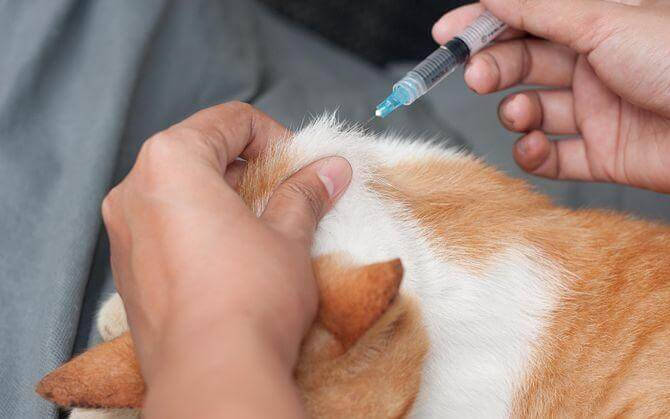
When the temperature rose as a result of vaccination, the reaction is considered normal. After 2-3 days, all symptoms will disappear. If the fever continues after 3 days, however, you should contact your veterinarian. Here, there may be complications associated with allergies, paralysis. Based on the complications identified, treatment is prescribed.






